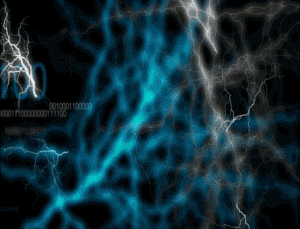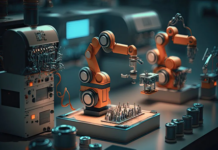
In a world where humans and machines continually interact, isolation matters. Miles of wiring in an electric car connect switches, sensors and high-voltage motors. An industrial controller exchanges data, commands and power with sensors on a factory floor. A high-voltage medical device monitors patients in clinics or extended-care facilities. A USB interface connects industrial machines to microcontrollers. A high-voltage relay operates on commands from a smart controller.
Examples such as these machine-to-machine and human-to-machine interactions are becoming more and more common as mechanical industrial systems are replaced with electrical motors, sensors and actuators. Clunky switches are being replaced with sensitive touch controls. The number of electrical motors – many operating at high voltages – is growing rapidly. Semiconductor switches operating at high voltages are being deployed regularly. And they all need to communicate and interact with smart controllers and drivers. The increasing number of industrial, automotive, medical and offline applications need the protection, noise immunity and reliable performance that isolation technology provides.
Isolators are critical for reliable and, when applied correctly, safe operations. For example, an isolator can help protect humans against electric shock hazard by isolating accessible circuits from high voltage or a low-voltage processor, such as our C2000 microcontroller, that drives a powerful industrial motor.
Isolation solutions
The trend toward transferring data rates of several hundred megabits and more across isolation barriers with high efficiency and robustness against high-voltage surges is becoming common in many industrial applications. Also, data and power are being transferred across some isolation barriers in gate-driver and industrial-sensor applications. The push to increase the number of channels and channel-to-channel isolation is increasing demand for miniaturized solutions.
Key attributes
So what exactly is isolation? An isolation barrier is a physical media that facilitates the reliable exchange of data and/or power between two systems while preventing unwanted currents. There are several key attributes for an integrated isolation technology:
- The maximum voltage that an isolator can tolerate for a short period of time (surge voltage) or during normal operation (working voltage).
- The maximum rate of change of ground potential difference that the isolator can withstand without incurring a communication error.
- Latency caused by the isolation barrier, direct distance (clearance) and surface distance (creepage) between power pins.
- The level of electromagnetic interference.
A variety of approaches
As more devices are integrated in chip packages – replacing discrete capacitors and transformers – several approaches have been used:
Capacitive: Integrated capacitors using multi-layer silicon oxide instead of discrete capacitors offer a high level of isolation while transferring data through an electric field. Our capacitive isolation technology utilizes two capacitors in series on two die housed side-by-side in the same module. This approach allows us to offer a competitive reinforced isolation solution for high data-rate transfer. The data rate over a capacitive isolation barrier can exceed several hundred megabits per second. With some innovative circuit topologies, the data rate can go even higher, which is appealing for applications such as industrial Ethernet. Our company’s isolators leverage the advantages of customized CMOS technology to offer a high-performance reinforced isolation barrier.
Inductive: A pair of coupled inductors can be used to isolate two circuits while exchanging data through magnetic flux. Two inductors could be embedded in a laminate printed circuit board or monolithically integrated on a die. A unique advantage of inductive isolation is the capability to transfer power across the isolation barrier in excess of hundreds of milliwatts, removing the need for an additional power supply on the secondary side. Transferring power with high efficiency, in addition to sending data over the isolation barrier, is important for many industrial applications in order to enable low-input currents and very high maximum operating ambient temperature. TI digital isolators with integrated power technology provide highest power transfer efficiency through innovative material and inductor design.
Capacitive and inductive isolations are frequently combined with data and/or power conditioning. Data conditioning minimizes the danger that transient spikes will appear as data, helping isolation protect signals and ensure the smooth operation of equipment. Power conditioning optimizes power transfer efficiency.
Isolation can also be achieved by physically separating two systems while communicating through optical or electromagnetic waves.
One isolation solution will not fit every need. In many cases, industrial applications demand integrated solutions that include isolated amplifiers, isolated high-speed data links such as RS-485 signals, isolated gate drivers and so on. As humans and machines increasingly cooperate and collaborate, high-voltage isolation solutions will enable systems to operate robustly and reliably.
The blog first appeared in TI E2E Community



















